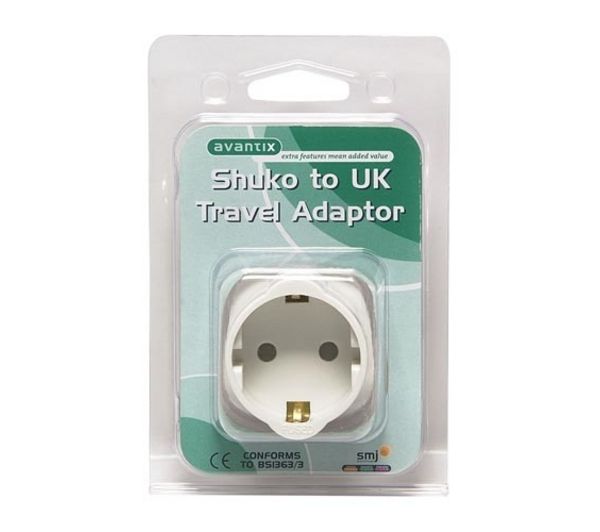I have tested in service electrical equipment I will not call it PAT testing as it was not that portable, but the equipment was made in Germany and the EU rules allow for free trade so as it stands we can't ban the imports. The equipment arrived as 14 articulated trailers which all connected together on site until job was complete then it was taken to next site so yes it was portable as the wheels remained in place.
Throughout this equipment CEE plugs and sockets were used but in the control room it used Shuko sockets because as a whole it is portable this is permitted. We swapped one or two for British 13A for kettle and sandwich toaster but in the main the Shuko sockets were left as next job could well be in Germany.
We used adaptors like shown to test parts of the equipment the testing took three men two days to complete often it would be done on two Sundays when it was not in use. Our testing was very exhaustive including testing every safety switch to prove it would stop the required motor it was the equivalent of testing a kettle will switch off if switched on with no water in it. Far more than in a normal PAT test.
We tend to think of PAT testing which should be called "Inspection and testing of in-service electrical equipment" as being just for small items, but it does include all items as as such it has to have a set of guide lines which will fit all.
So there is nothing to stop a German item being tested without a British plug. There is however a rule about selling items in retail outlets without a British plug. So the item you show could be tested without the adaptor then some one has added the adaptor to make it legal to sell it.
I will agree the wrong adaptor was used, and as such the shop should be made aware of their error. But there is nothing which is shown in the picture which would show the person doing the testing made an error.
There are loads of faulty adaptors around, of these three
as only one has a fuse.
In real terms plugged into an extension lead there is not a problem as there is a fuse in the extension lead plug. The plug adaptors like this
with earth connections are made but are rare, but these
are common. The non fused are not just cheap china imports this one
was British although very old, there should have been a small fuse inside, but it had a screw instead, likely because some one could not find a fuse of that size? so we do need to be wary and inspect adaptors. But the problem with PAT testing it is only valid for the environment in which it was tested in the picture below all items may have well been PAT tested but not for that environment.








